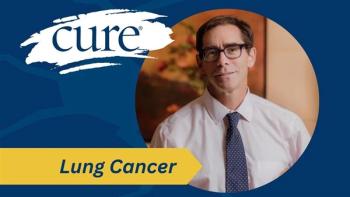We love hearing from survivors and caregivers we've interviewed for past CURE articles. That's why we were so excited to hear about the continuing good news that Bob Hammer is doing with his Have a Ball Golf Tournament in Northern California (www.haveaballgolf.com). We featured Bob, a two-time testicular cancer survivor, back in 2007 after he and his wife, Kim, created the Have a Ball Foundation and golf tournament ("Having a Ball" CURE Spring 2007). With many non-profit organizations, it started small, but Bob happily told us this afternoon that they were close to hitting the $1 million mark -- and in just under six years. That's a lot of zeros for a seemingly "small" golf tournament. And one with no celebrity, he's quick to point out. He also wants "to honor all the folks who have helped us reach this goal," he says. It's a pretty big accomplishment for Bob, Kim and all the people who have helped with the foundation and tournament. Let me be one of the first to offer a pre-congratulations!Bob's story is pretty amazing. After finishing chemotherapy, Bob raised enough money to participate in Lance Armstrong's annual "Ride for the Roses" in Austin, where he met Lance's oncologist, Craig Nichols. With his advice, Bob made a medical decision that allowed him to conceive his son, who turns seven this year.From the 2007 article: "At the time, we were just grateful for the daughter we had, so we didn't store sperm," says Hammer, 38. "But then, we were faced with the surgery and no chance to have any other children." Hammer's medical team, along with Dr. Nichols, re-evaluated his scans and determined the suspicious areas in his remaining testicle were scar tissue and surgery wasn't necessary. Two years later, the Hammers welcomed their second child, Josh."When Josh was born, I wanted to give back to the LAF [for putting me in the right place at the right time]," says Hammer, who today is cancer-free. Believing he could use his professional skills to raise money for the LAF and other cancer organizations, he established the Have a Ball Foundation (www.haveaballgolf.com) that holds an annual golf tournament in Sunnyvale, Ca., complete with corporate sponsorships and donations. The rest is history. The organization has now helped 20 local & national cancer institution with the money they have raised. He also wanted to share some of the accomplishments the Have a Ball Foundation has made since 2005:> Sent over 50 children with cancer to attend Camp Okizu, a camp for kids with cancer in Novato, Ca.> Donated over $250,000 to the Lance Armstrong Foundation to provide grants for cancer research and programs.> Established and awarded five oncology nursing grants in honor of Dr. Fred Marcus through Sequoia Hospital in Redwood City, Ca. and the U.C.S.F. nursing program.> Formed Cancer Alliance Program with Sequoia Hospital to raise awareness for cancer through TV, radio, billboard and pamphlets that will be distributed in several hospitals.It's amazing that such a chance meeting could affect so many lives, not just Bob's and his son's, but also all of the other lives he has touched with his foundation.






